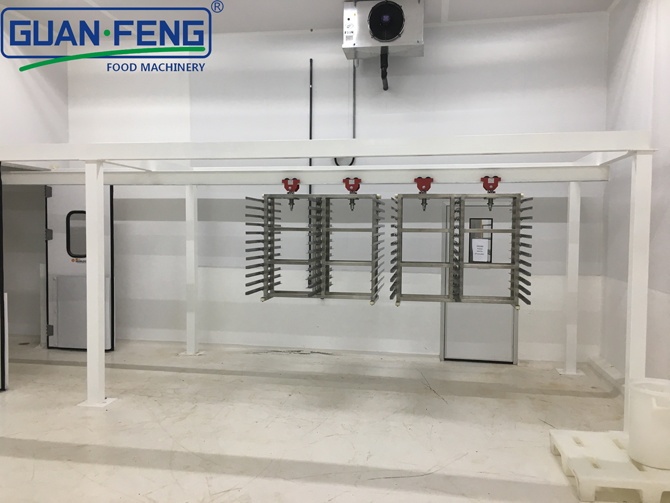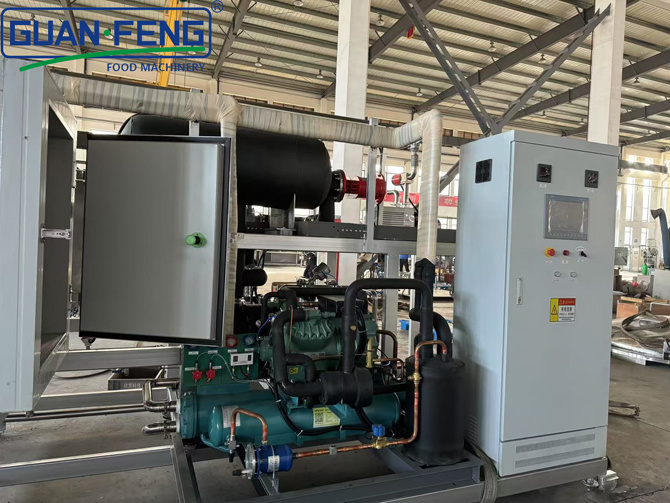BLOG
Focus on hot topics, real-time dynamics
Common Misconceptions About Lyophilization Machines Debunked: Unveiling the Truth Behind Freeze Drying Technology
Common Misconceptions About Lyophilization Machines Debunked
Lyophilization, commonly known as freeze drying, is a critical process in the life sciences industry, particularly for preserving sensitive products such as pharmaceuticals, biological materials, and food items. Despite its significance, several misconceptions cloud the understanding of lyophilization machines and their functionalities. In this comprehensive article, we will debunk these myths, clarify the science behind lyophilization, and provide insights into the various applications and advantages of these sophisticated machines.
Table of Contents
- 1. Introduction to Lyophilization
- 2. What is Lyophilization?
- 3. Common Misconceptions About Lyophilization Machines
- 3.1 Myth #1: Lyophilization is Just Freezing
- 3.2 Myth #2: All Lyophilization Machines are the Same
- 3.3 Myth #3: Lyophilization is an Expensive Process
- 3.4 Myth #4: Freeze-Dried Products Lose Their Nutritional Value
- 3.5 Myth #5: Lyophilization is Only Used for Pharmaceuticals
- 4. Applications of Lyophilization
- 5. Benefits of Lyophilization
- 6. Conclusion
- 7. Frequently Asked Questions (FAQs)
1. Introduction to Lyophilization
Lyophilization has emerged as an essential technique in preserving the integrity and stability of sensitive substances. By removing moisture from materials without altering their composition, lyophilization enables products to maintain their efficacy over extended periods. Understanding the operational aspects and dispelling common myths can help industries make informed decisions when it comes to utilizing lyophilization machines.
2. What is Lyophilization?
Lyophilization is a process that involves freezing a product and then reducing the pressure to allow the frozen water in the material to sublimate directly into vapor. This process includes three key stages: freezing, primary drying, and secondary drying. During freezing, the product is cooled to a temperature below its freezing point, creating ice crystals. In primary drying, the pressure is lowered, leading to the sublimation of ice. Finally, secondary drying removes any remaining moisture, resulting in a stable, dry product.
3. Common Misconceptions About Lyophilization Machines
3.1 Myth #1: Lyophilization is Just Freezing
One of the most prevalent misconceptions is that lyophilization is simply a freezing process. While freezing is a crucial initial step in lyophilization, the process involves much more. It requires a sophisticated understanding of thermodynamics, mass transfer, and vacuum technology. The removal of moisture through sublimation is what differentiates lyophilization from standard freezing methods. Each phase in the lyophilization process is meticulously controlled to ensure product quality and stability.
3.2 Myth #2: All Lyophilization Machines are the Same
Another common myth is that all lyophilization machines function identically. In reality, various models exist, designed to cater to specific needs and applications. Factors such as shelf design, cooling capacity, and the type of vacuum system can vary significantly between machines. These differences impact the efficiency of the lyophilization process, the quality of the final product, and the operational costs. Selecting the right lyophilization machine is critical for achieving desired outcomes in specific applications.
3.3 Myth #3: Lyophilization is an Expensive Process
Many believe that lyophilization is prohibitively expensive, which can deter businesses from adopting this technology. While there may be significant initial investments involved in purchasing high-quality lyophilization machines, the long-term benefits often outweigh the costs. Lyophilization can enhance product shelf life, reduce waste, and allow for easier transportation and storage. When considering these factors, the overall cost-effectiveness of lyophilization becomes evident.
3.4 Myth #4: Freeze-Dried Products Lose Their Nutritional Value
It is a widespread belief that lyophilization adversely affects the nutritional properties of products, particularly in the food industry. On the contrary, freeze drying preserves most nutrients, flavors, and colors, making it an excellent option for preserving food items. The gentle nature of the lyophilization process minimizes the degradation of heat-sensitive compounds, ensuring that the nutritional integrity of the product is maintained.
3.5 Myth #5: Lyophilization is Only Used for Pharmaceuticals
While lyophilization is indeed widely used in the pharmaceutical industry, it is not limited to this field alone. Various sectors, including food processing, biotechnology, and even the cosmetic industry, utilize lyophilization to preserve products and extend shelf life. In food production, for instance, lyophilized fruits and vegetables provide convenience without compromising taste or nutrition.
4. Applications of Lyophilization
Lyophilization has a broad range of applications across different industries:
4.1 Pharmaceutical Industry
In the pharmaceutical sector, lyophilization is employed to stabilize drugs, particularly biologics, which are sensitive to heat and moisture. Lyophilized drugs can be reconstituted easily and maintain their efficacy over time.
4.2 Biotechnology
Biotechnology companies use lyophilization for preserving microbial cultures, enzymes, and other biological materials that require stable conditions for longevity.
4.3 Food Processing
The food industry relies on lyophilization to produce lightweight, shelf-stable products such as instant coffee, freeze-dried fruits, and meals, making them popular among outdoor enthusiasts and consumers seeking convenience.
4.4 Cosmetics
In the cosmetic sector, lyophilization preserves active ingredients in products like face masks and serums, ensuring that they remain effective and shelf-stable.
5. Benefits of Lyophilization
The benefits of utilizing lyophilization machines are numerous and can significantly enhance product quality and operational efficiency:
5.1 Extended Shelf Life
Lyophilization effectively extends the shelf life of products by removing moisture, which is a primary cause of degradation. As a result, companies can reduce waste and enjoy longer marketing timelines.
5.2 Enhanced Product Stability
By stabilizing sensitive compounds, lyophilization ensures that products retain their biological activity and potency, making them reliable for end-users.
5.3 Lightweight and Portable Products
Lyophilized products are often significantly lighter than their non-lyophilized counterparts, making them easier to transport and store. This feature is especially beneficial for industries relying on distribution.
5.4 Convenience in Use
Consumers favor lyophilized products for their convenience, as they typically require minimal preparation before consumption. This advantage makes them appealing in modern lifestyles.
5.5 Cost-Effectiveness
Despite initial costs, the efficiency and longevity provided by lyophilization lead to cost savings in production and storage over time, making it an economically feasible option for many businesses.
6. Conclusion
Understanding the common misconceptions surrounding lyophilization machines is crucial for making informed decisions in various industries. By debunking myths related to the process, we can appreciate the complexity and advantages of lyophilization technology. This innovative method ensures that sensitive products maintain their quality and stability, offering numerous benefits across sectors. With a clearer understanding of lyophilization, businesses can harness this technology to improve their processes and deliver superior products to their customers.
7. Frequently Asked Questions (FAQs)
7.1 What is the difference between lyophilization and dehydration?
Lyophilization is a specific form of dehydration that involves freezing the product before removing moisture through sublimation. Traditional dehydration methods may involve heating, which can alter the product's structure and nutrient content.
7.2 How long does the lyophilization process take?
The duration of the lyophilization process can vary based on the product and machine specifications. Typically, it may take anywhere from several hours to a few days to complete.
7.3 Are lyophilized products safe to consume?
Yes, lyophilized products are safe to consume, provided they are processed and packaged under hygienic conditions. The lyophilization process ensures that harmful microorganisms are eliminated.
7.4 Can any product be lyophilized?
Most products can be lyophilized, but those with high fat or sugar content may pose challenges. Regular testing and optimization are essential for successful lyophilization.
7.5 How should lyophilized products be stored?
Lyophilized products should be stored in a cool, dry place, preferably in airtight containers to prevent moisture absorption and maintain product stability.
Hot Tags:
PREVIOUS:
Contact Us
E-mail:
sales@syguanfeng.com
Tel:
+86 15088506234
Address:
South Industrial Park of Dongguan, Shangyu District, Shaoxing City,Zhejiang Province,China.
GUANFENG, your customization experts!
GUANFENG FOOD MACHINERY - leading supplier of integrated food processing solutions
Copyright© 2024 ZHEJIANG GUANFENG FOOD MACHINERY CO.,LTD.










